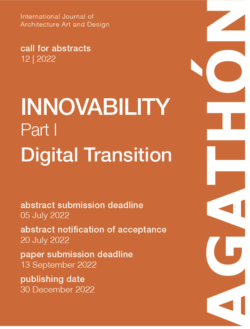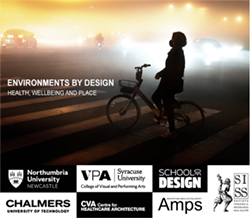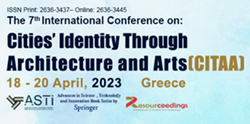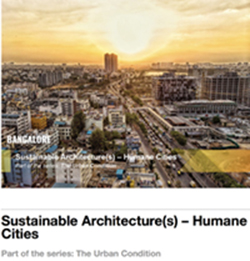ISSN (online): 2071-1050
Call of the Journal:
- Agricultural Innovation and Sustainable Development
- Applications of Artificial Intelligence in New Energy Technology Systems
- Approaches to the Non-conflictual Use of Resources
- Artificial Intelligence (AI) and Sustainable Development Goals (SDGs) | Exploring the Impact of AI on Politics and Society
- Autonomous Vehicles | Future of Transportation Sustainability
- Belt & Road Initiative in Times of ‘Synchronized Downturn’ | Issues, Challenges, Opportunities
- BIM-Based Life Cycle Sustainability Assessment for Buildings
- Biochar and Greenhouse Gas Emissions during Livestock Bio-Waste Composting
- Bringing Governance Back Home | Lessons for Local Government regarding Rapid Climate Action
- Carbon Neutrality and Sustainability
- Challenges and Opportunities for a Sustainable Tourism Sector
- Circular Economy | A Move towards Economical Viable Sustainability
- Circular Economy Evaluation | Towards a Transparent and Traceable Approach under a Life Cycle Perspective
- Climate Adaptation and Mitigation through Sustainable Energy Solutions
- Considering Irreversibility in Transport Infrastructure Planning
- Construction 4.0 | The Next Revolution in the Construction Industry
- Corporate Sustainability and Sustainable Management in Changing Environments
- Covid-19 and Urban Inequalities | Spatial and Digital Dimensions
- Designing and Implementing Innovative Business Models and Supply Chains | The Digitalization and Sustainability Imperative
- Digital Economy, E-commerce, and Sustainability
- Eco-Didactic Art, Design, and Architecture in the Public Realm
- Economy and Sustainability of Natural Resources
- Educational Spaces and Sustainability
- Effects of Climate Change on Sustainable Agriculture
- Efficient and Non-polluting Biomass and Wastes Thermal Gasification
- Emerging Research on Socio-Technological Sustainability Transitions
- Energy System Sustainability
- Environmental Impacts under Sustainable Conservation Management
- Environmental Management Approaches and Tools to Boost Circular Economy
- Environmental Migration and Displacement-Migration Aspirations in Response to Environmental Changes
- Exploring and Analyzing Links between the Covid-19 Pandemic and Globalization | Levers for Sustainability Transitions?
- Farming System Design and Assessment for Sustainable Agroecological Transition
- Geological Heritage and Biodiversity in Natural and Cultural Landscapes
- Governance of Technology in Smart Cities
- Green Building Technologies II
- High Precision Positioning for Intelligent Transportation System
- Household Food Waste | From an International Perspective
- Hydrological Responses by Climate Change and Human Activities
- IEIE Buildings (Integration of Energy and Indoor Envirornent)
- Influence of Hydrometeorological Hazards on Regional Sustainable Development in Vulnerable Mountain Areas
- Infotainment Systems and Intelligent Vehicles
- Innovations towards Greener and Smarter Mobility for Sustainable Development
- Innovative and Sustainable Technology in Carbon Emission Reduction
- Innovative Food Science and Sustainable Process Management
- Integration of BIM and ICT for Sustainable Building Projects
- Karst and Environmental Sustainability
- Low CO2 Concrete
- Machine Learning for Sustainable Energy
- Maladaptation to Climate Change
- Management and Innovation for Environmental Sustainability
- Management Approaches to Improve Sustainability in Urban Systems
- Mediatization of Social Sustainability | Paradigm of Explicitation and Understanding of the Environment, Society and the Economy
- Modelling and Mapping of Soil
- Natural and Technological Hazards in Urban Areas | Assessment, Planning and Solutions
- Nature-Based Tourism, Protected Areas, and Sustainability
- New Environmental, Economic and Social Challenges for Raw Materials Supply | Sustainable Mining and Extractive Waste Exploitation
- New Evidences of Indoor Thermal Comfort in Residential and Tertiary Buildings | Design and Evaluation Methods
- Organic and Perovskite Photovoltaics | New Materials, New Processes and Stability
- Planning and Design Interventions for Improving the Well-Being of Vulnerable Groups
- Port Governance
- Public Health Related to Climate Change
- Public Transport Accessibility and Sustainability
- Recycling and Sustainability of Plastics
- Regenerative Buildings and Beyond | Scale Jumping Sustainable and Net-Zero Designs to Regenerative Neighbourhoods, Districts, Communities, and Cities
- Renewable Energies for Sustainable Development
- Rural Development | Challenges for Managers and Policy Makers
- Scientific Theory and Methodologies toward a Sustainable Future under Post-Covid-19 Transition Movement
- Sheltering and Housing Displaced Populations
- Smart City Innovation and Resilience in the Era of Artificial Intelligence
- Soil Stabilization in Sustainability
- Sustainability and Agricultural Economics
- Sustainability at the Nexus between Climate Change and Land Use Change
- Sustainability in Water and Wastewater Treatment Technologies
- Sustainable and Safe Two-Wheel Mobility
- Sustainable Building and Sustainable Indoor Environment
- Sustainable Cities | Challenges and Potential Solutions
- Sustainable Construction Engineering and Management
- Sustainable Cropping Practices to Counteract Environmental Stresses
- Sustainable Development and Practices | Production, Consumption and Prosumption
- Sustainable Development of Energy, Water and Environment Systems (SDEWES)
- Sustainable Enterprise Excellence and Innovation
- Sustainable Entrepreneurship, Firm Performance and Innovation
- Sustainable Geotechnics | Theory, Practice, and Applications
- Sustainable Innovation Trends and Global Value Chains in Emerging Markets
- Sustainable Intelligent Manufacturing and Logistics Systems
- Sustainable Railway Systems | Innovation and Optimization
- Sustainable Transportation Management, Governance and Public Policy
- Sustainable Transportation Planning and Policy
- Sustainable Zero Energy Buildings
- Systems Engineering for Sustainable Development Goals
- The Human Side of Sustainable Innovations
- The Value Generation of Social Farming
- Towards a Sustainable Urban Planning for the Green Deal Era
- Urban Microclimate and Air Quality as Drivers of Urban Design
- Urban Renewal, Governance and Sustainable Development | More of the Same or New Paths?
- Urban Sprawl and Sustainability II
- Urban Sustainability | Community-Scale Climate Adaptation
- Urban Sustainability | Re-envisioning Cities to Lead the Way toward to Circular Economy
- Urbanization and Road Safety Management
- Water-Food-Energy Nexus for Sustainable Development
- World Cities in the Era of Globalization
Jan
2021
Feb
2021
Geological Heritage has very diverse elements, both for its intrinsic nature and for its social and scientific significance. These elements have a scientific dimension (stratigraphic, geomorphological, lithological, paleontological, etc.) and a landscape dimension, both with implications for territorial management. In territorial management and planning, it is essential to carry out an inventory and cataloging of places of natural and social interest, to establish a comprehensive policy. The identification and valuation of the geological and biological heritage, and their interaction in the landscape, should favor the conservation and preservation of this natural and historical heritage. Sustainable development implies a rational use that prevents the degradation or loss of these unique environments of the natural environment; as well as a dissemination and awareness of landscape resources, for a better understanding and enjoyment, integrating activities of environmental education and nature tourism. The diversity of a territory is the result of the complex and continuous interaction of the geological substrate (geotopical) and biological factors that model the existing ecological and evolutionary processes at the level of genes, species, ecosystems, and landscapes, and that are expressed in a characteristic representation of organisms adapted to these factors. These vary according to the spatial dimensions and the temporal scales considered, in a wide range that goes from the geological processes that involve millions of years and vast territories to the casuistic biotic and anthropic events that can occur in an instant in any territorial sector. However, it is the circumstances derived from human activity that in recent decades are intensely modeling natural landscapes on a planetary scale. Whether this process of global “domestication” is part of the natural evolutionary cycle or not is an issue that is subject to intense debate and is inextricably associated with the other crucial debate on the ethics of human development. Is it incompatible with the preservation of geodiversity and biodiversity and landscape agreements? Is it possible to obtain the necessary resources from a territory without draining them and maintaining the ecosystem services of the same? Is there a more responsible social and political paradigm with the preservation of the natural environment? From the point of view of science, one of the ways to contribute objectively to that evaluation is to provide the collection and processing of field and laboratory data, which determine and model trends to explain this diversity and the geo-environmental interactions present in each rural and/or natural landscape, including the human species. The objective of this Special Issue is to highlight the importance of studies on geological and biological heritage and their involvement in geodiversity and biodiversity in an integrated way in the landscape, describing varied methodologies applied to specific territories (cultural and traditional heritage,) taking into account the singularity and its geoconservation based on active processes (geological risks, anthropic environmental impacts, etc.) and dynamics of its ecosystems (biological invasions, bioindicators, ethnobotanical studies, interactions between species, agrobiodiversity, etc.). This Special Issue will collect high-quality papers that contribute to the methodology and application of both design approaches and evaluation and decision-making frameworks in the context of the definition of strategies for natural heritage (geological and biological) and landscape.
Keywords: geological heritage and geodiversity; biological heritage and biodiversity; landscape – quality and landscape fragility; cultural heritage and sustainability; landscape degradation – climate change, agroecosystems, ethnobotany.
Geological Heritage and Biodiversity in Natural and Cultural Landscapes
Geological Heritage has very diverse elements, both for its intrinsic nature and for its social and scientific significance. These elements have a scientific dimension (stratigraphic, geomorphological, lithological, paleontological, etc.) and a landscape dimension, both with implications for territorial management. In territorial management and planning, it is essential to carry out an inventory and cataloging of places of natural and social interest, to establish a comprehensive policy. The identification and valuation of the geological and biological heritage, and their interaction in the landscape, should favor the conservation and preservation of this natural and historical heritage. Sustainable development implies a rational use that prevents the degradation or loss of these unique environments of the natural environment; as well as a dissemination and awareness of landscape resources, for a better understanding and enjoyment, integrating activities of environmental education and nature tourism. The diversity of a territory is the result of the complex and continuous interaction of the geological substrate (geotopical) and biological factors that model the existing ecological and evolutionary processes at the level of genes, species, ecosystems, and landscapes, and that are expressed in a characteristic representation of organisms adapted to these factors. These vary according to the spatial dimensions and the temporal scales considered, in a wide range that goes from the geological processes that involve millions of years and vast territories to the casuistic biotic and anthropic events that can occur in an instant in any territorial sector. However, it is the circumstances derived from human activity that in recent decades are intensely modeling natural landscapes on a planetary scale. Whether this process of global “domestication” is part of the natural evolutionary cycle or not is an issue that is subject to intense debate and is inextricably associated with the other crucial debate on the ethics of human development. Is it incompatible with the preservation of geodiversity and biodiversity and landscape agreements? Is it possible to obtain the necessary resources from a territory without draining them and maintaining the ecosystem services of the same? Is there a more responsible social and political paradigm with the preservation of the natural environment? From the point of view of science, one of the ways to contribute objectively to that evaluation is to provide the collection and processing of field and laboratory data, which determine and model trends to explain this diversity and the geo-environmental interactions present in each rural and/or natural landscape, including the human species. The objective of this Special Issue is to highlight the importance of studies on geological and biological heritage and their involvement in geodiversity and biodiversity in an integrated way in the landscape, describing varied methodologies applied to specific territories (cultural and traditional heritage,) taking into account the singularity and its geoconservation based on active processes (geological risks, anthropic environmental impacts, etc.) and dynamics of its ecosystems (biological invasions, bioindicators, ethnobotanical studies, interactions between species, agrobiodiversity, etc.). This Special Issue will collect high-quality papers that contribute to the methodology and application of both design approaches and evaluation and decision-making frameworks in the context of the definition of strategies for natural heritage (geological and biological) and landscape.
Keywords: geological heritage and geodiversity; biological heritage and biodiversity; landscape – quality and landscape fragility; cultural heritage and sustainability; landscape degradation – climate change, agroecosystems, ethnobotany.
AGORA (FAO), AGRIS-Agricultural Sciences and Technology (FAO), Animal Science Datbase (CABI), CAB Abstracts (CABI), Chemical Abstracts (ACS), Current Contents Sciences (Clarivate Analytics), DOAJ, EconPapers (RePEc), FSTA-Food Science and Technology Abstracts (FIS), Genamics Journal Seek, GeoBase (Elsevier), Global Health (CABI), HINARI (WHO), IDEAS (RePEc), Inspec (IET), Journal Citation Reports/Science Edition (Clarivate Analytics), Journal Citation Reports/Social Science Edition (Clarivate Analytics), Norwegian Register for Scientific Journals, Series and Publishers (NSD), RePEC, Review of Agricultural Entomology (CABI), Science Citation Index Expanded-Web of Science (Clarivate Analytics), Scopus (Elsevier), Social Science Citation Index-Web of Science (Clarivate Analytics), Web of Science (Clarivate Analytics), CLOCKSS (Digital Archive), e-Helvetica (Swiss National Library Digital Archive), Academic OneFile (Gale/Cengage Learning), EBSCOhost (EBSCO Publishing), Google Scholar, J-Gate (Informatics India), ProQuest Central (ProQuest), Science in ContexT (Gale/Cengage Learning), WorldCat (OCLC).
Info at: www.mdpi.com/journal/sustainability/apc
Guest Editors
Prof. Dr. Antonio Miguel Martínez-Graña
Dr. José Ángel Sánchez Agudo









